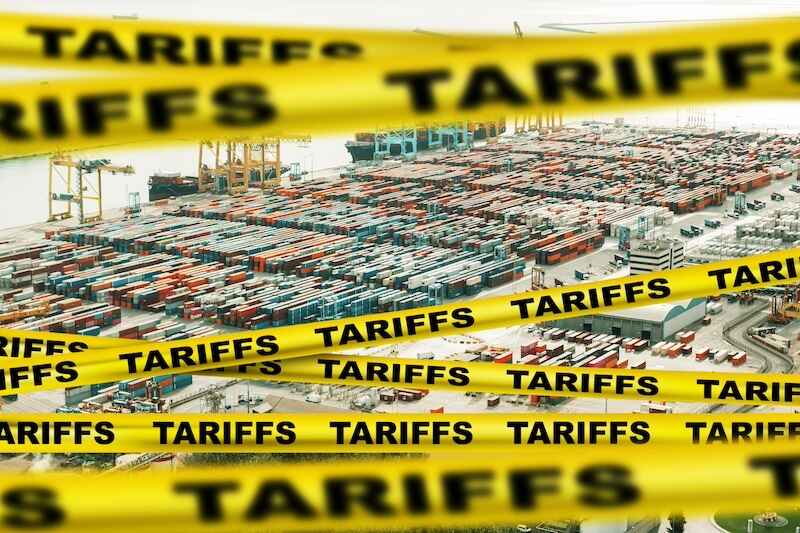The Latest in Fake News: Inflation Has Peaked
Shah Gilani|April 14, 2022
On Tuesday, when the March reading of the headline Consumer Price Index (CPI) came out hot, but a tad less than jacked up expectations, stocks rallied.
On Wednesday, when the Producer Price Index (PPI) came out hotter than hot, stocks jumped higher.
Why? Well, the crazy reason is traders and investors are following a ridiculous fake news narrative that says March’s sky-high inflation measures are as bad as inflation’s going to get, so it’s time to pile back into stocks.
Excuse me while I look to the heavens and roll my eyes. Because loading up on stocks now, based on that narrative, is, I’m sorry, idiotic.
Here’s the real deal and one potentially super-profitable way to beat the fake news.
Fake News Narratives
Everyone’s trading narratives, stories about what’s happening and how it will affect stocks. It’s the new “macro” trading game.
It doesn’t take a lot of analysis and certainly not a lot of number-crunching. It’s all about headlines, what the financial media positions in front of us, and what analysts and bankers, and pundits say about what those headlines mean for stocks.
The financial media drives money flows into stocks based on narratives everyone thinks they understand.
Granted, it’s an easy and often very profitable way to trade – following the crowd, that is.
But Houston, we have a problem. Traders and investors chasing narratives as if they’re gospel don’t always see what’s on the other side of a narrative. Some narratives are a matter of interpretation, like reading the CPI and PPI numbers.
The latest “pop” narrative is that March’s eye-popping CPI and PPI readings weren’t unexpected and were probably as bad as they would get, meaning they represent “peak inflation.”
Stocks initially rallied on Tuesday’s headline CPI print that showed inflation up 8.5% from a year ago. Markets cooled off into the close, with some pundits saying they were comfortable with the high CPI print but uncomfortable with what Wednesday’s PPI print would say about producers’ input prices.
When PPI came out above expectations on Wednesday morning, posting a frightening 11.2% jump year-over-year, stocks rallied. And sure enough, analysts pointed to the big jump and declared that was expected and likely as bad as it’s going to get.
Then there’s the other side of that fake news narrative.
There’s absolutely no proof inflation has peaked.
Just because some measures in the CPI, like prices of used cars (which fell 3.8% from February to March, their biggest drop since 1969), declined month-over-month doesn’t mean they’re going to continue coming down. It also doesn’t mean other measures will immediately start coming down just because a few big components of CPI, like oil, gas, and home heating costs came down after the price survey was completed.
But that’s what the narrative turned into. We’ve likely seen peak inflation, and ipso-facto the Fed’s not going to have to raise rates as much as feared.
Investing on that narrative is a gamble, at best.
Even if inflation starts to slow its torrid run higher, there’s nothing that says’ it won’t pick back up. There’s nothing that says some components of CPI or PPI for that matter, might show a slower pace of price appreciation or even see prices come down, while other inputs of CPI and PPI see a pick up in price appreciation trends.
The bottom line is the narrative isn’t news. It’s nothing more than wishful thinking based on a collective interpretation by some analysts and pundits of the latest price measures of components of inflation indexes.
What’s not going to happen is, the Fed is not going to look at how markets are trading based on that narrative and get fooled into believing, without any proof or reliable data, that inflation’s peaked and they won’t have to raise rates as much as feared.
To the contrary, precisely because another narrative that says the Fed’s late in raising rates and will have to raise more than expected to tame inflation, which is a sensible narrative and eminently tradable one, the Fed will have to raise rates, probably more than is expected now.
It’s a matter of their credibility at this point.
So how do you trade one narrative against another?
You ignore the one that’s unsubstantiated and trade the larger, more credible, more realistic narrative that you should have been trading already.
That’s why today, I’m recommending ProShares UltraShort 20+ year Treasury (TBT) – a leveraged, inverse bond fund that goes up when bond prices go down (and yields, meaning interest rates) go up. You can buy call options on TBT, or you can buy an out-of-the-money call spread on TBT and hit it out of the park when the Fed hikes rates over their next few meetings.
Cheers,
Shah

Shah Gilani
Shah Gilani is the Chief Investment Strategist of Manward Press. Shah is a sought-after market commentator… a former hedge fund manager… and a veteran of the Chicago Board of Options Exchange. He ran the futures and options division at the largest retail bank in Britain… and called the implosion of U.S. financial markets (AND the mega bull run that followed). Now at the helm of Manward, Shah is focused tightly on one goal: To do his part to make subscribers wealthier, happier and more free.

